Introduction 02: Who Am I and How Do I Work?

R.P. Churchill, CBAP, PMP, CSPO, CSM, CSD
Introduction 02: Who Am I and How Do I Work?
Experience and Skills
My formal training is in mechanical engineering with a strong background in software engineering.
I served as a process engineer in many different industries, in varying physical and management environments, involving a wide range of solution architectures, for numerous different applications, in locations all over the world, almost always in the capacity of an external vendor or consultant providing highly specialized analysis and technical solutions to larger organizations.
I have studied and become certified in many of the contemporary management and problem-solving practices and have written and mentored on them extensively.
My specialty was computer simulation, which involves not only exposure to the full SDLC life cycle, but detailed analysis of what is important and what the goals and outputs should be. I designed, built, and employed both major classes of simulation (continuous and discrete-event) for many different applications, from first principles, using a variety of high-level programming languages.
Please see my website, webinars, and work with the Tampa Bay IIBA chapter.
Introduction 02: Who Am I and How Do I Work?
35 Years of Simulation
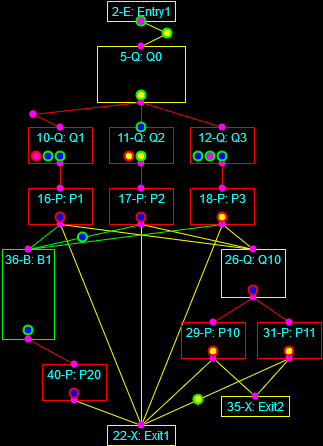
Continuous simulation of the heating of a square billet and Discrete-Event simulation of a multi-phase process.
Introduction 02: Who Am I and How Do I Work?
35 Years of Simulation
|
Industries
|
|
|
Introduction 02: Who Am I and How Do I Work?
Process vs. Engagement vs. Solution vs. Environment
The process is what we analyze and either build or change to serve customers.
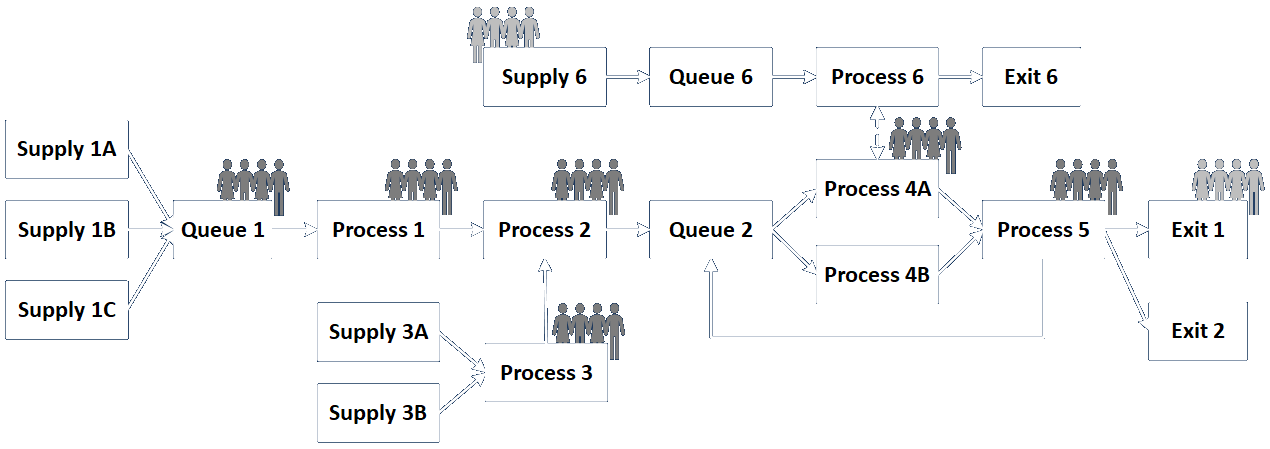
The engagement is the work we do to make a change to the process.

The solution is the change we make to the process.
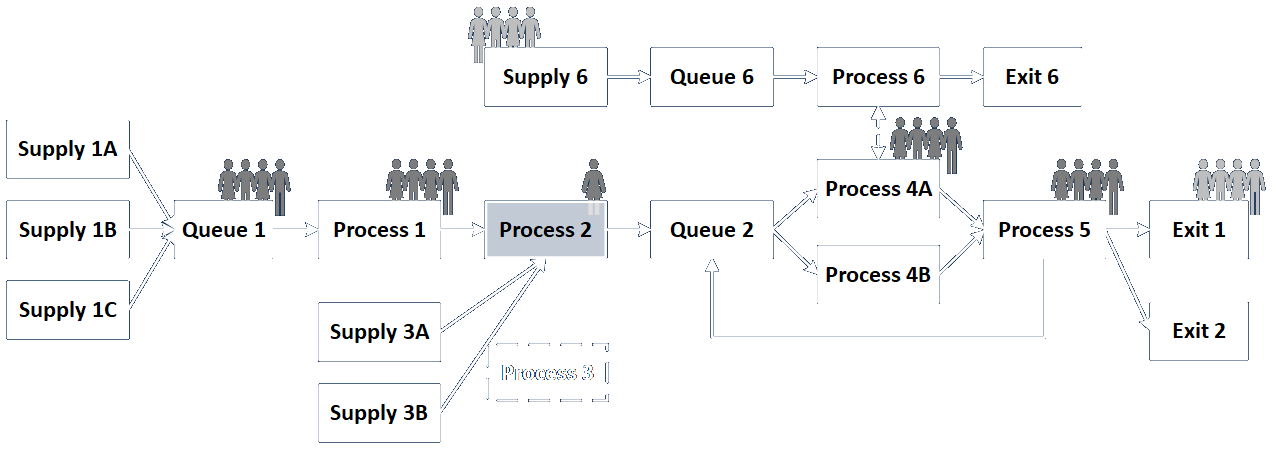
The environment is the physical, economic, and management context we work in.
Introduction 02: Who Am I and How Do I Work?
The Framework:
- Project Planning
- Intended Use
- Assumptions, Capabilities, Limitations, and Risks and Impacts
- Conceptual Model (As-Is State)
- Data Sources, Collection, and Conditioning
- Requirements (To-Be State: Abstract)
- Functional (What it Does)
- Non-Functional (What it Is, plus Maintenance and Governance)
- Design (To-Be State: Detailed)
- Implementation
- Test
- Operation, Usability, and Outputs (Verification)
- Outputs and Fitness for Purpose (Validation)
- Acceptance (Accreditation)
- Project Close
- Functional (What it Does)
- Non-Functional (What it Is, plus Maintenance and Governance)
- Operation, Usability, and Outputs (Verification)
- Outputs and Fitness for Purpose (Validation)
Introduction 02: Who Am I and How Do I Work?
The Framework: Simplified
 Intended Use
Intended Use Conceptual Model (As-Is State)
Conceptual Model (As-Is State) Data Sources, Collection, and Conditioning
Data Sources, Collection, and Conditioning Requirements (To-Be State: Abstract)
Requirements (To-Be State: Abstract)
- Functional (What it Does)
- Non-Functional (What it Is, plus Maintenance and Governance)
 Design (To-Be State: Detailed)
Design (To-Be State: Detailed) Implementation
Implementation Test
Test
- Operation, Usability, and Outputs (Verification)
- Outputs and Fitness for Purpose (Validation)
 Intended Use
Intended Use Conceptual Model (As-Is State)
Conceptual Model (As-Is State) Data Sources, Collection, and Conditioning
Data Sources, Collection, and Conditioning Requirements (To-Be State: Abstract)
Requirements (To-Be State: Abstract)- Functional (What it Does)
- Non-Functional (What it Is, plus Maintenance and Governance)
 Design (To-Be State: Detailed)
Design (To-Be State: Detailed) Implementation
Implementation Test
Test- Operation, Usability, and Outputs (Verification)
- Outputs and Fitness for Purpose (Validation)
Introduction 02: Who Am I and How Do I Work?
Continuous Iteration and Correction
Regardless of the structure of the engagement, the activities in each phase are carried out in an iterative fashion that continuously incorporates review, feedback, and correction both within and between phases.

Link to detailed discussion.
Introduction 02: Who Am I and How Do I Work?
Basic Engagement Structures

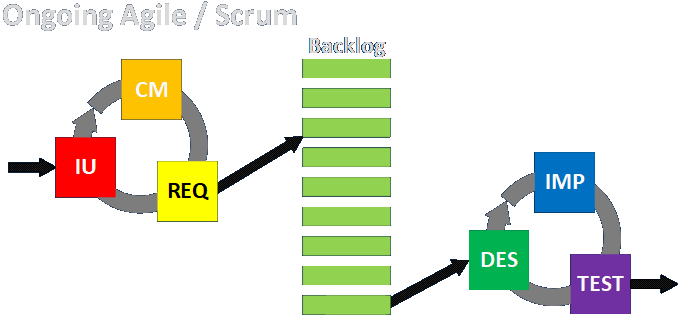

Link to detailed discussion.
Introduction 02: Who Am I and How Do I Work?
Engagement Structure Variations



Link to detailed discussion.
Introduction 02: Who Am I and How Do I Work?
Tracking Across the Engagement
Items are tracked using a Requirements Traceability Matrix.
Omissions recognized in later phases can cause items to be created in earlier phases.
Procedural requirements may apply to each phase.
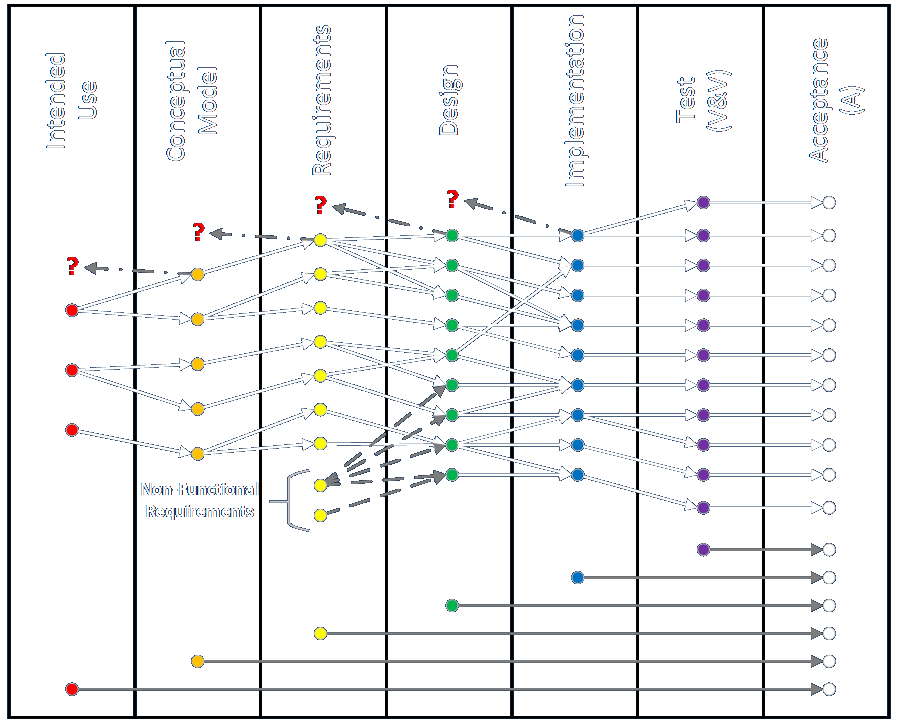
Link to detailed discussion.
Introduction 02: Who Am I and How Do I Work?
Tracking Across the Engagement cont'd
The internal, logical structure of the design needs to be mapped as well.
Both forms of mapping should include all the tracked elements.
I believe that both mappings should align in the design phase, because that's what drives the work to be done.
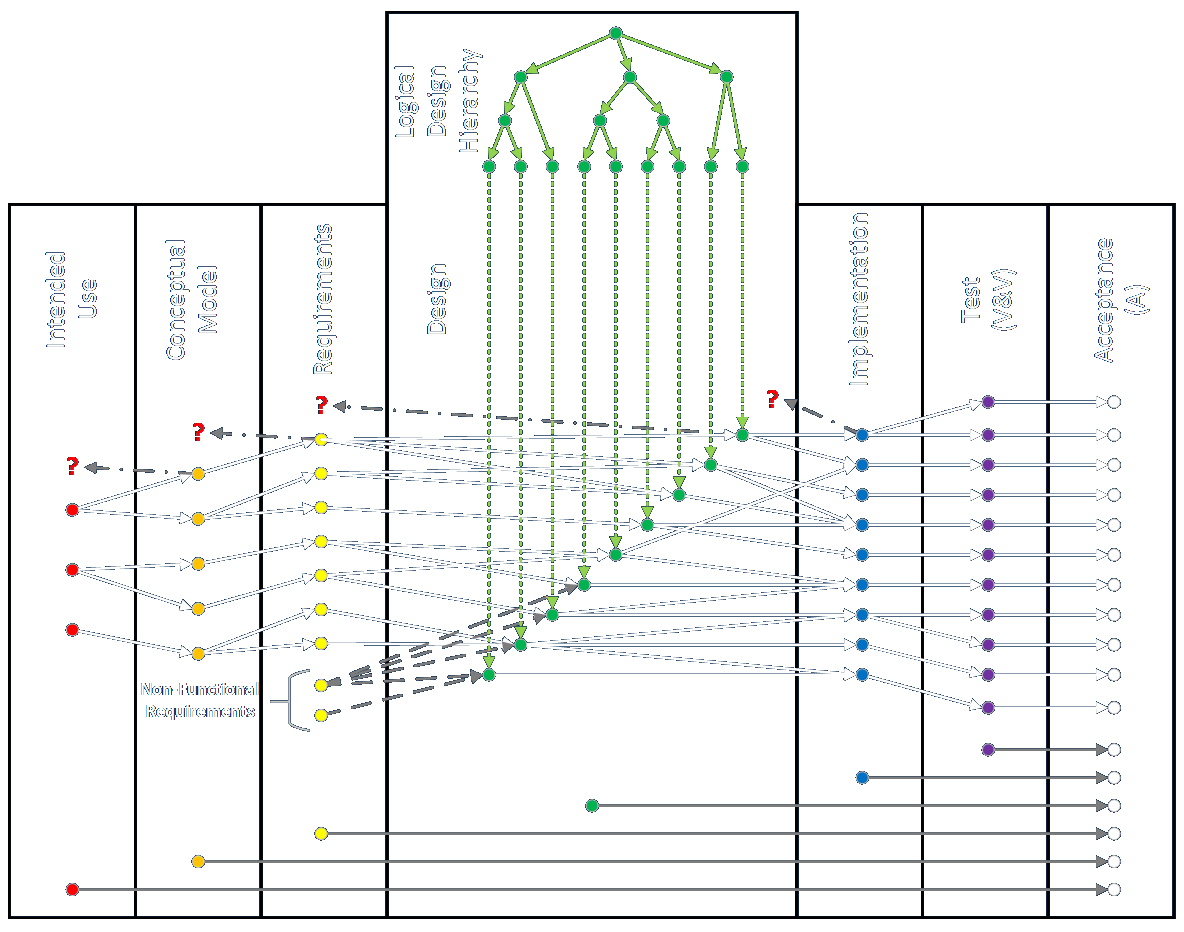
Introduction 02: Who Am I and How Do I Work?
Tracking and Task Management
As concepts are being tracked across the life of the engagement and within the logic of the design, they can be considered at a high level and progressively broken down into individual work items as analysis proceeds.
This breakdown can be done in conjunction with tracking across phases.
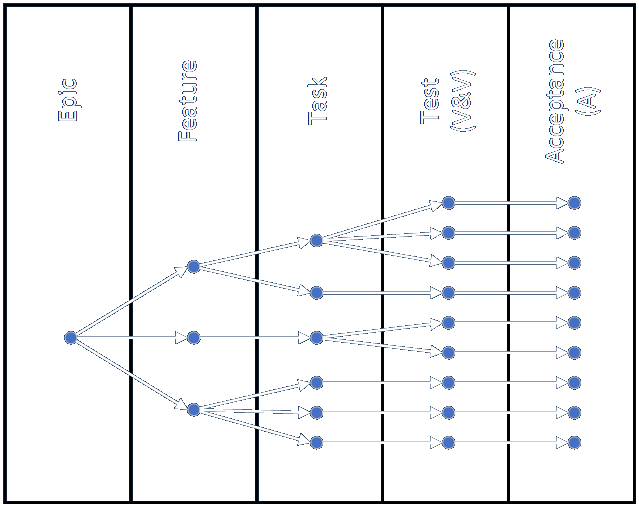
Introduction 02: Who Am I and How Do I Work?
Extended Project / Program / Product Framework
Once a system is implemented, deployed, and accepted, it may be used, maintained, and modified over a long period of time, until it is removed and possibly replaced.
Ongoing modifications to an existing system will involve engagements with an existing As Is state which may have to be "re-discovered."
Ideally, ongoing work will be integrated and linked into the original project's core documentation.
 Operation and Maintenance
Operation and Maintenance End-of-Life and Replacement
End-of-Life and Replacement

 Operation and Maintenance
Operation and Maintenance End-of-Life and Replacement
End-of-Life and ReplacementLink to detailed discussion.
Introduction 02: Who Am I and How Do I Work?
The Purpose of an Organization is to Generate Benefits
Organizations are formed by people for a purpose. Although business analysis techniques can be used to analyze and address individual issues, the practice is mainly geared toward facilitating cooperative efforts involving multiple people and organizations. It thus inevitably includes communication to develop mutual understanding.
Benefits accrue to customers (who may or may not always be who you think they are), employees, owners, suppliers, and other stakeholders affected by their activities.
The managers and shareholders of these organizations should always seek improvements of the types listed. This is how value is generated for all parties.
Introduction 02: Who Am I and How Do I Work?
Types of Benefits Realized
Benefits are realized in many ways, but most include savings along the three edges of the Iron Triangle of cost, time, and quality (including features). The joke is that you can have it fast, cheap, or good, pick two. (And if you want it really, really fast, cheap, or good, pick one.)
Cost and time are similar across activities, but quality and features can vary as widely as can be imagined.
Many of the non-functional requirements can express realizable benefits. Items like reliability, modularity, clarity, maintainability, ease-of-use, and robustness all lead to savings in time, money, and human well-being.
Introduction 02: Who Am I and How Do I Work?
Types of Benefits Realized (cont'd)
In the end, the biggest driver of improvements is expressed in terms of money. That doesn't mean it's the only way, but it is the strongest signal we have that communicates how efficiently we are using resources to achieve society's many and competing ends. Economists' insight that the price system, which can be thought of as an ongoing global auction for all goods and services all the time, coordinates people's activities (relatively) efficiently is one of the greatest intellectual breakthroughs of all time. As such, most calculations inside an organization are made in terms of monetary costs and benefits.
For things that aren't measured in terms of money, like human well-being, having your non-profit survive and continue to be funded, getting reelected to office or growing the bureaucracy (if you're cynical), aren't based on monetary calculations directly, but they will surely fail if they aren't mindful of using resources with some kind of efficiency. The global auction includes trade-offs between all kinds of things, not just money.
Costs and benefits should be considered across the appropriate scope the activity addressed in each engagement, but the full life cycle costs and benefits should always be considered. A lot of faulty analysis comes from leaving things out.
Introduction 02: Who Am I and How Do I Work?
This presentation and other information can be found at my website:
E-mail: bob@rpchurchill.com
LinkedIn: linkedin.com/in/robertpchurchill
Introduction 02: Who Am I and How Do I Work?
Next: Approach 01: Imposed By Competition
Prev: Introduction 01: Overview
Index
| Introduction | ||
|
|
||
| Approaches | ||
|
|
||
| Considerations | ||
|
|